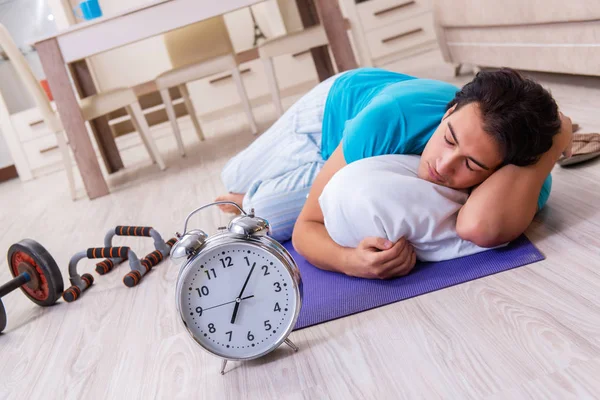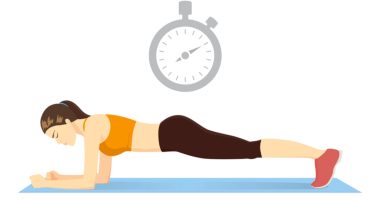Aside disadvantages of sleeping on the floor: are there benefits? – Sleeping on the floor has been a common practice in many cultures for centuries. It is believed to have various benefits, such as improving posture, reducing back pain, and promoting better sleep. However, there are also concerns about the potential down sides of this practice. In this article, we will explore the pros and cons of sleeping on the floor and discuss whether it is a good option for everyone.
Potential Down Sides of Sleeping on the Floor
Hard Surface
One of the biggest concerns about sleeping on the floor is the hard surface. It can be uncomfortable for some people, especially if they are not used to sleeping on a firm surface. The hard surface can also cause pressure points and pain in certain areas of the body.
Lack of Support
Another potential downside of sleeping on the floor is the lack of support. Unlike a mattress, the floor does not contour to your body and provide support to your joints. This can cause discomfort and pain, especially if you have a pre-existing condition like arthritis or joint pain.
Exposure to Dust and Dirt
Sleeping on the floor can also expose you to dust and dirt, which can cause allergies and respiratory problems. Dust mites and other allergens can thrive in your body.
Cold Temperature
Sleeping on the floor can also expose you to colder temperatures, especially during the winter months. This can make it difficult to fall asleep or stay asleep, and can even lead to health problems like hypothermia.
Difficulties Getting Up
Getting up from the floor can also be difficult for some people, especially those with mobility issues or injuries. This can make it harder to get out of bed in the morning, and can even be dangerous if you have a condition that affects your balance.
Is Sleeping on the Floor Safe?
Sleeping on the floor is generally safe for most people, as long as they take the necessary precautions. However, it may not be suitable for everyone, especially those with pre-existing conditions or injuries that can be aggravated by sleeping on a hard surface.
If you are considering sleeping on the floor, it is important to talk to your doctor or a healthcare professional first to make sure it is safe for you.
Benefits of Sleeping on the Floor
Improves Posture
Sleeping on a flat and firm surface like the floor can help improve your posture. It allows your spine to maintain its natural curve and prevent it from bending unnaturally, which can cause discomfort and pain. By sleeping on the floor, you can train your body to maintain proper posture even when you are not sleeping.
Reduces Back Pain
Sleeping on the floor can also help alleviate back pain, especially if it is caused by poor posture or an uncomfortable mattress. The firm surface of the floor can provide more support to your back and reduce pressure points that can cause pain.
Promotes Better Sleep
Sleeping on the floor can promote better sleep by helping you fall asleep faster and stay asleep longer. The flat surface of the floor can reduce the need for tossing and turning, which can interrupt your sleep. Additionally, sleeping on the floor can help regulate your body temperature, which can promote deeper sleep.
Improves Blood Circulation
Sleeping on the floor can also improve blood circulation by allowing your body to rest in a natural position. This can help reduce swelling and inflammation in your legs, feet, and other areas of your body.
Saves Money
Sleeping on the floor can also save you money in the long run. Mattresses can be expensive, and they need to be replaced every few years. By sleeping on the floor, you can avoid the expense of buying a new mattress and potentially save hundreds of dollars.
Also read | Healthiest sleeping position for neck: back, side or stomach?
Who Should Avoid Sleeping on the Floor?
Sleeping on the floor may not be suitable for everyone. It may be best to avoid sleeping on the floor if you:
- Have a pre-existing condition like arthritis or joint pain
- Are pregnant
- Have mobility issues or injuries that make it difficult to get up from the floor
- Have respiratory problems or allergies
- Are prone to hypothermia or other cold-related health problems
How to Sleep on the Floor Safely and Comfortably
If you decide to sleep on the floor, there are several things you can do to make it safer and more comfortable:
Use a Thin Mattress or a Yoga Mat
Using a thin mattress or a yoga mat can provide some cushioning and support while still allowing you to sleep on a firm surface. This can help reduce pressure points and discomfort, especially if you are not used to sleeping on a hard surface.
Choose the Right Location
Choose a location that is clean, dry, and free from dust and dirt. Avoid sleeping directly on a concrete floor, as this can be uncomfortable and cold. Instead, choose a hardwood or tile floor, or lay down a rug or carpet to provide some insulation.
Use a Pillow
Using a pillow can help support your neck and head and reduce discomfort while sleeping on the floor. Choose a pillow that is not too thick or too soft, as this can affect your posture and cause discomfort.
Maintain Proper Posture
Maintaining proper posture while sleeping on the floor is important to prevent pain and discomfort. Make sure to keep your spine aligned and avoid twisting or bending unnaturally.
Keep the Room Clean
Keeping the room clean and free from dust and dirt can help prevent allergies and respiratory problems. Use a dustbin and a mop to clean the floor regularly, and use a mattress protector to keep your bedding clean. Source
Also read | Best bedding color for sleep: everything to know









